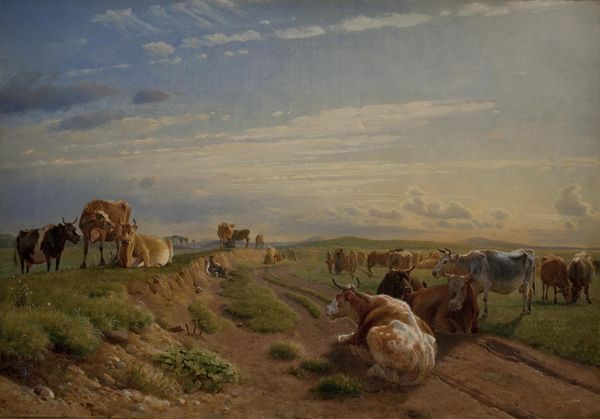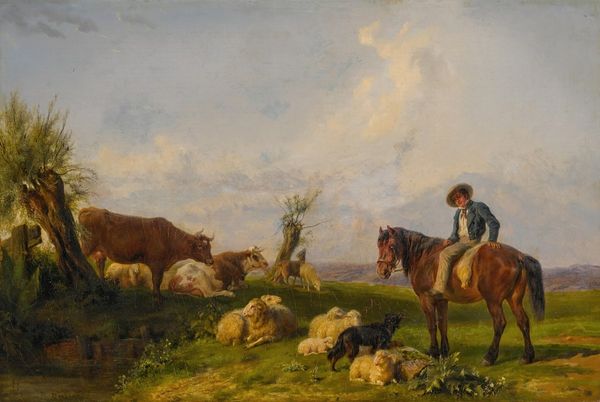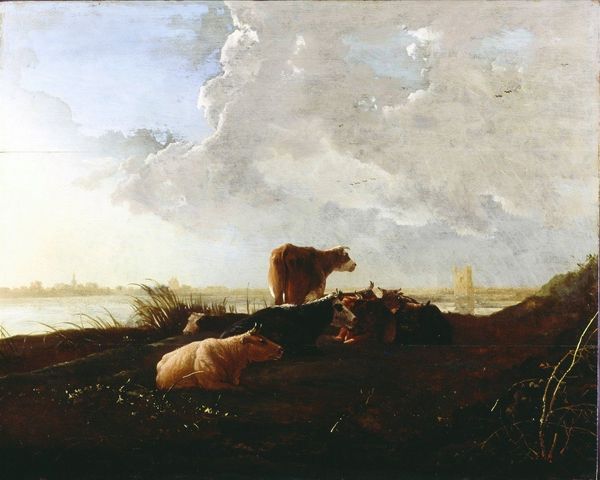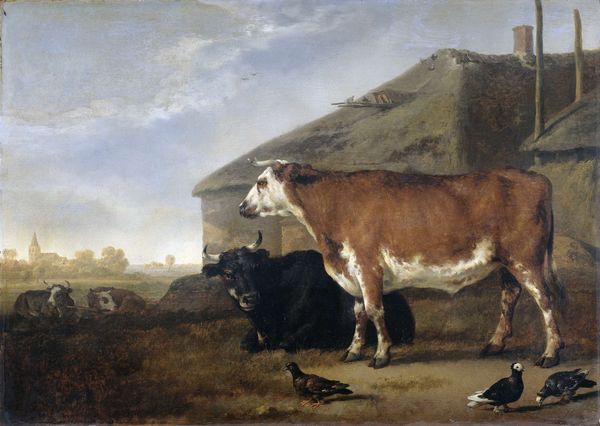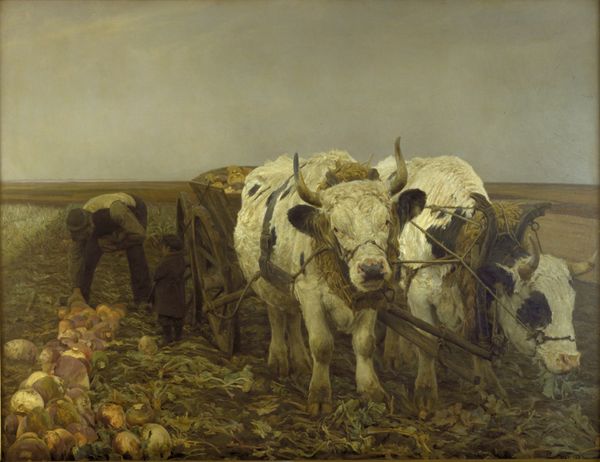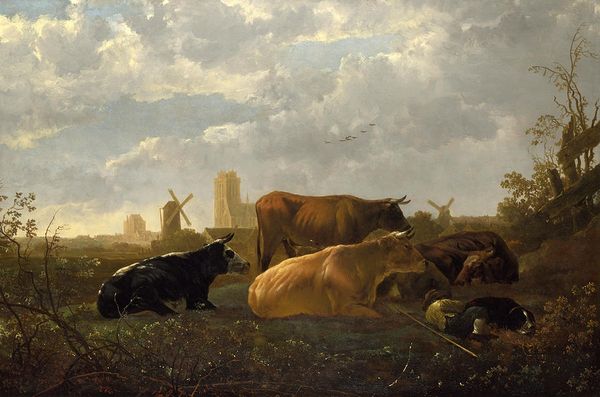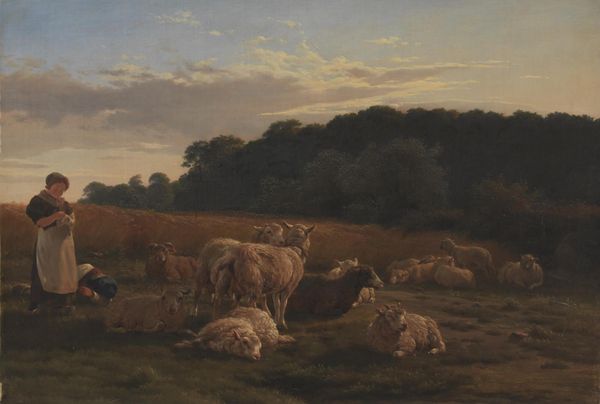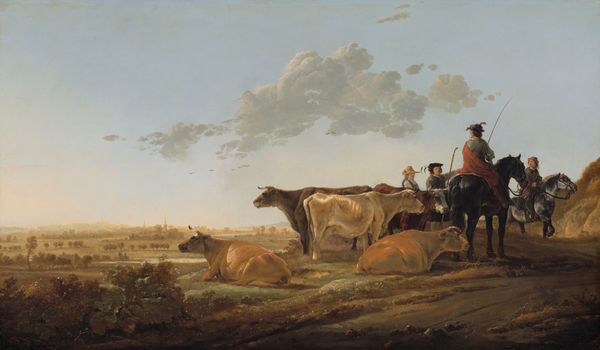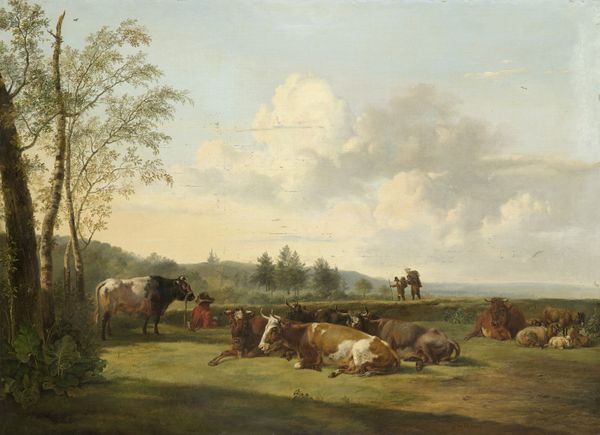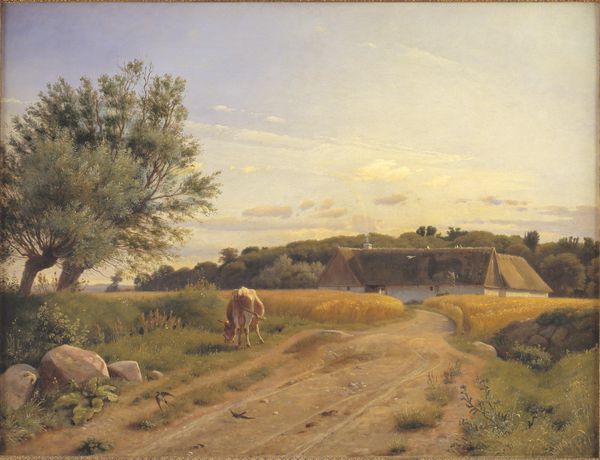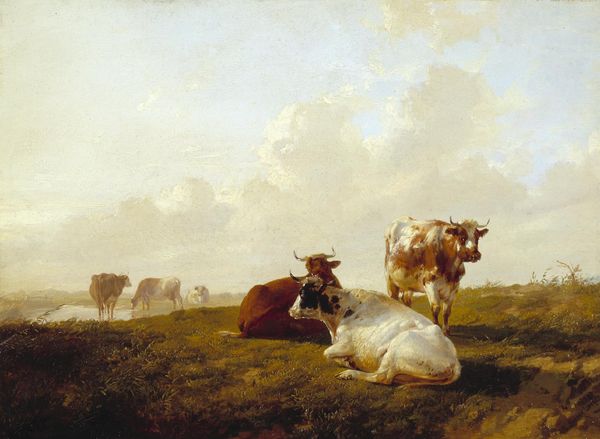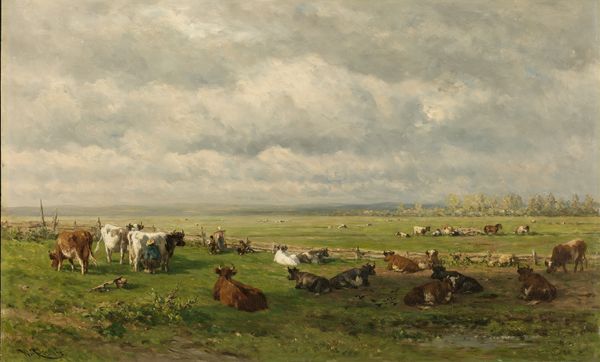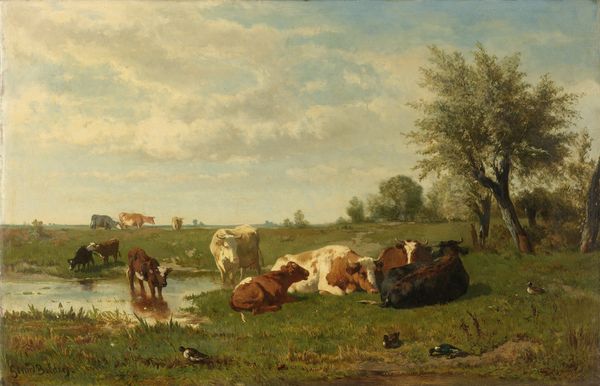
painting, plein-air, oil-paint
#
16_19th-century
#
painting
#
plein-air
#
oil-paint
#
landscape
#
oil painting
#
genre-painting
#
academic-art
#
realism
Copyright: Public domain
Editor: This is Rosa Bonheur’s “Ploughing Scene,” painted in 1854 using oil paints in a plein-air style. I’m struck by the palpable sense of labor here. It’s a very straightforward depiction of work. What jumps out at you in this piece? Curator: The relationship between human and animal labor is interesting. Do you see the synergy – or perhaps tension – embedded in the image's symbolic vocabulary? The oxen, powerful, muscular, their energy is almost chaotic compared to the steady, rhythmic action of the man guiding the plough. This duality—raw strength versus directed purpose—reflects a common 19th-century understanding of nature tamed. Editor: So, it's about control versus wildness, but also interdependence? Curator: Precisely. Note the haystacks in the background. They are icons of plenty, promise, and agrarian prosperity; all depending on this complex interaction we are observing in the foreground. The symbols here speak to cycles of production, where everything works together: the oxen provide power, the man offers direction, and from the earth comes sustenance. And consider how paintings like this served as potent symbols amid growing industrialization, reminding people of simpler, perhaps more virtuous, rhythms of life. Do you find a sense of idealized labor here? Editor: Yes, definitely, especially given the attention to detail, which elevates this moment into something timeless. The birds scattered in the foreground might hint that this natural cooperation and harmony includes a vast array of nature, beyond the ox and man. Curator: Well observed. In understanding art we must not overlook those quiet reminders that visual language conveys multifaceted narratives and collective memories. Editor: This has opened my eyes to a whole new appreciation for seemingly simple genre painting! Curator: And it also demonstrates the layered meanings a painting like this would evoke, considering the period it was painted in, doesn’t it?
Comments
No comments
Be the first to comment and join the conversation on the ultimate creative platform.
